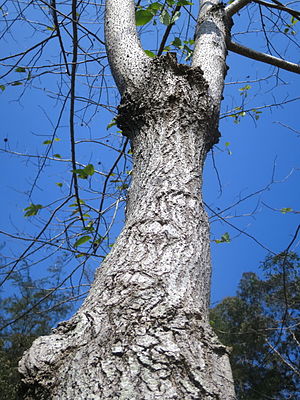Note: This is a project under development. The articles on this wiki are just being initiated and broadly incomplete. You can Help creating new pages.
Difference between revisions of "Camptotheca acuminata - Camptotheca"
Chaithrika (talk | contribs) (Created page with "thumb|right|''Angelica'' Camptotheca (happy tree, cancer tree <ref name="cancer tree" />, or tree of life) is a genus of medium-sized de...") |
Chaithrika (talk | contribs) |
||
| Line 25: | Line 25: | ||
<ref name="cancer tree">[http://www.angelicaherbs.com/herbdetail.php?id=132&cat=sanskrit_name&sanskrit_name=&letter=]</ref> | <ref name="cancer tree">[http://www.angelicaherbs.com/herbdetail.php?id=132&cat=sanskrit_name&sanskrit_name=&letter=]</ref> | ||
<ref name="xǐ shù">[http://www.herbs2000.com/herbs/herbs_xi_shu.htm]</ref> | <ref name="xǐ shù">[http://www.herbs2000.com/herbs/herbs_xi_shu.htm]</ref> | ||
| + | </references> | ||
Revision as of 10:09, 20 December 2016
Camptotheca (happy tree, cancer tree [1], or tree of life) is a genus of medium-sized deciduous trees growing to 20 metres (66 ft) tall, native to southern China and Tibet. The genus is usually included in the tupelo family Nyssaceae, but sometimes included (with the tupelos) in the dogwood family Cornaceae.
The name "happy tree" is a direct translation of the Chinese name xǐ shù [2](Simplified Chinese:喜树).
There are two species
- Camptotheca acuminata Decne.
- Camptotheca lowreyana S.Y.Li
Medicinal uses
- The bark and stems of C. acuminata contain the alkaloid camptothecin. Several chemical derivatives of camptothecin are under investigation for or used as drugs for cancer treatment, including irinotecan, topotecan, rubitecan.
- C. acuminata also contains the chemical compounds trifolin and hyperoside.
References
